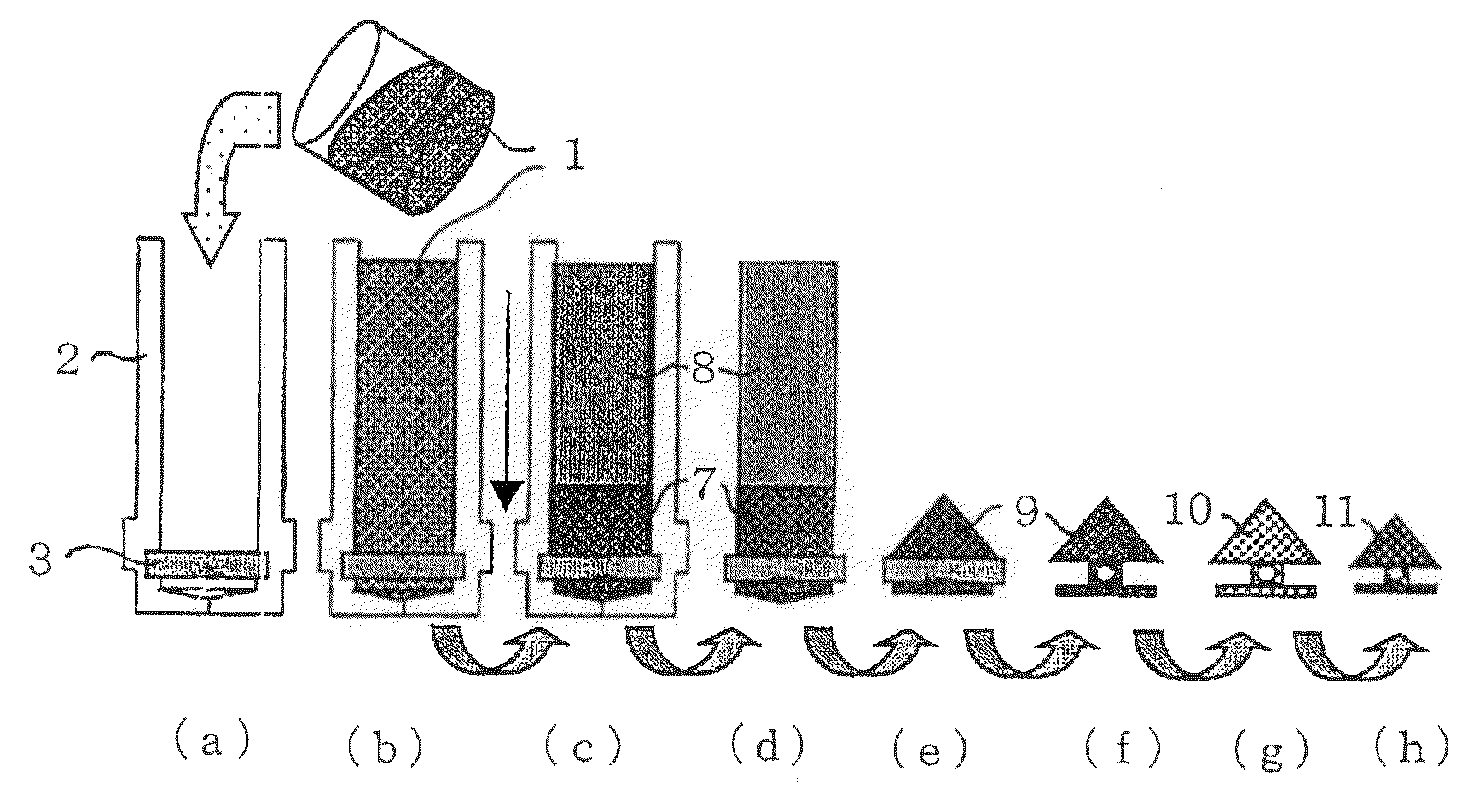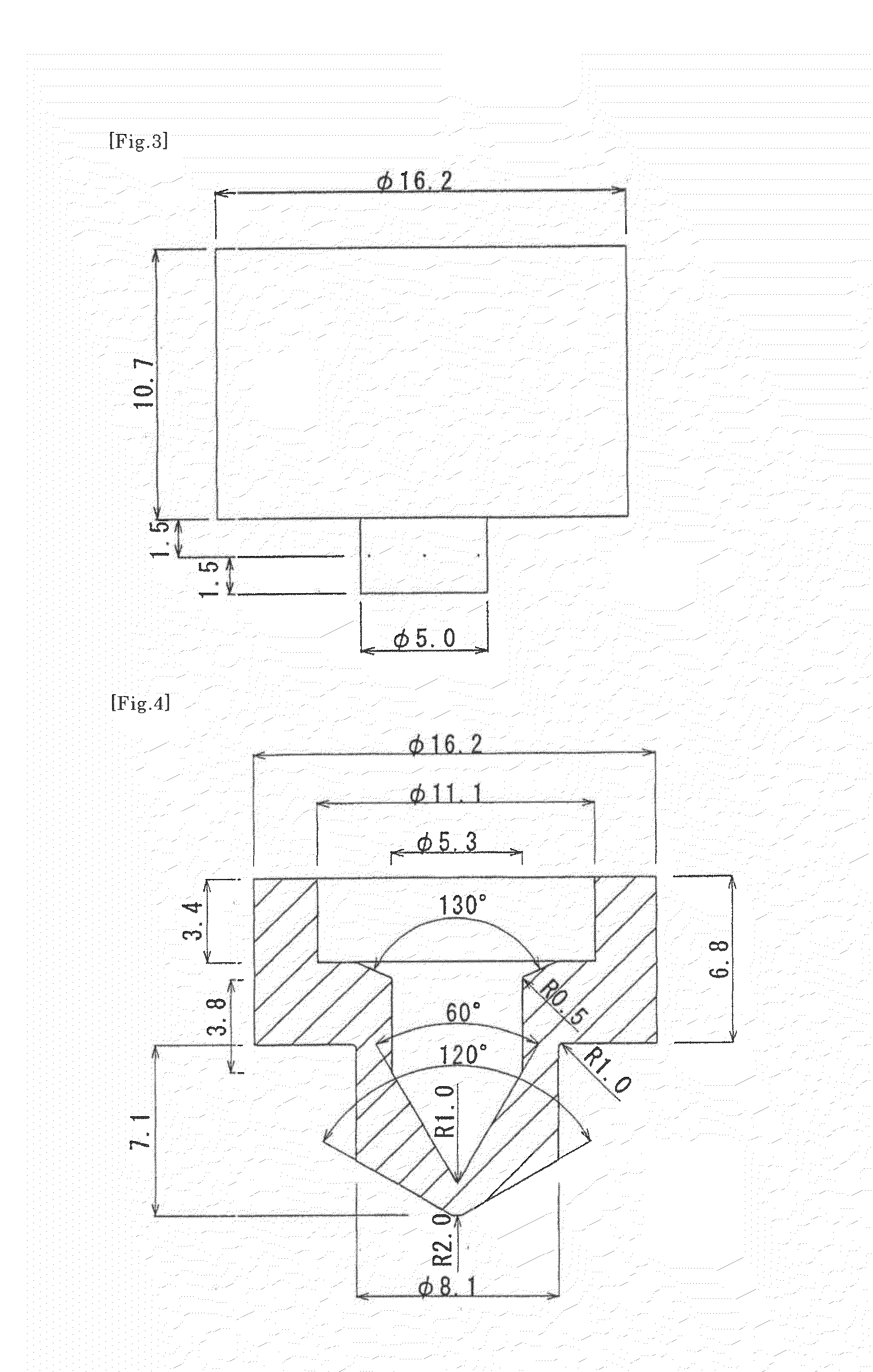Powder green compact, sintered compact and processes for producing them
a technology of sintered compacts and green compacts, which is applied in the direction of special fuel injection apparatuses, machines/engines, synthetic resin layered products, etc., can solve the problems of low mechanical strength, easy cracking of intricate green compacts, and difficulty in producing complex products by conventional powder metallurgy processes. , to achieve the effect of high mechanical strength, high mechanical strength and resistance to cracks or breakag
- Summary
- Abstract
- Description
- Claims
- Application Information
AI Technical Summary
Benefits of technology
Problems solved by technology
Method used
Image
Examples
example 1
[0084]A compact as a diesel engine fuel injection nozzle precursor, and a diesel engine fuel injection nozzle were fabricated as described below.
[0085]A split mold consisting of two aluminum cavities was provided which was capable of forming a cylindrical compact with an inner diameter of 8 mm. An acrylic resin core similar to the core 3 shown in FIG. 2 was interposed between the cavities, and the two cavities were combined. The core had branches with a diameter of 0.2 mm.
[0086]5 g of a styrene monomer was mixed with 5 g of a cold-curing epoxy acrylate resin. The mixture liquid was mixed with 20 g of cold-forming steel SKD 11 having a particle diameter of 4 μm (manufactured by EPSON ATMIX CORPORATION). The resultant mixture liquid was combined with 0.8 g of a polyoxyethylene distyrene and 0.3 g of PERCURE VL. The mixture was stirred sufficiently to give a slip.
[0087]The slip was injected into the mold. The mold was set in a high-speed cooling centrifuge with a rotor radius of 98 mm ...
example 2
[0094]A diesel engine fuel injection nozzle was prepared and a fuel injection test was carried out as described below.
(Production of Sintered Compact)
[0095]A split mold consisting of two aluminum cavities was provided which was capable of forming a cylindrical compact with an inner diameter of 18 mm. An acrylic resin core similar to the core 3 shown in FIG. 2 was interposed between the cavities, and the two cavities were combined. The core had branches with a diameter of 100 μm.
[0096]5 g of a styrene monomer was mixed with 5 g of a cold-curing epoxy acrylate resin. The mixture liquid was mixed with 20 g of cold-forming steel SKD 11 having a particle diameter of 4 μm (manufactured by EPSON ATMIX CORPORATION). The resultant mixture liquid was combined with 0.8 g of a polyoxyethylene distyrene and 0.15 g of PERCURE VL. The mixture was stirred sufficiently to give a slip.
[0097]The slip was injected into the mold. The mold was set in a high-speed cooling centrifuge with a rotor radius of...
PUM
| Property | Measurement | Unit |
|---|---|---|
| diameter | aaaaa | aaaaa |
| diameter | aaaaa | aaaaa |
| temperature | aaaaa | aaaaa |
Abstract
Description
Claims
Application Information
 Login to View More
Login to View More - R&D
- Intellectual Property
- Life Sciences
- Materials
- Tech Scout
- Unparalleled Data Quality
- Higher Quality Content
- 60% Fewer Hallucinations
Browse by: Latest US Patents, China's latest patents, Technical Efficacy Thesaurus, Application Domain, Technology Topic, Popular Technical Reports.
© 2025 PatSnap. All rights reserved.Legal|Privacy policy|Modern Slavery Act Transparency Statement|Sitemap|About US| Contact US: help@patsnap.com



